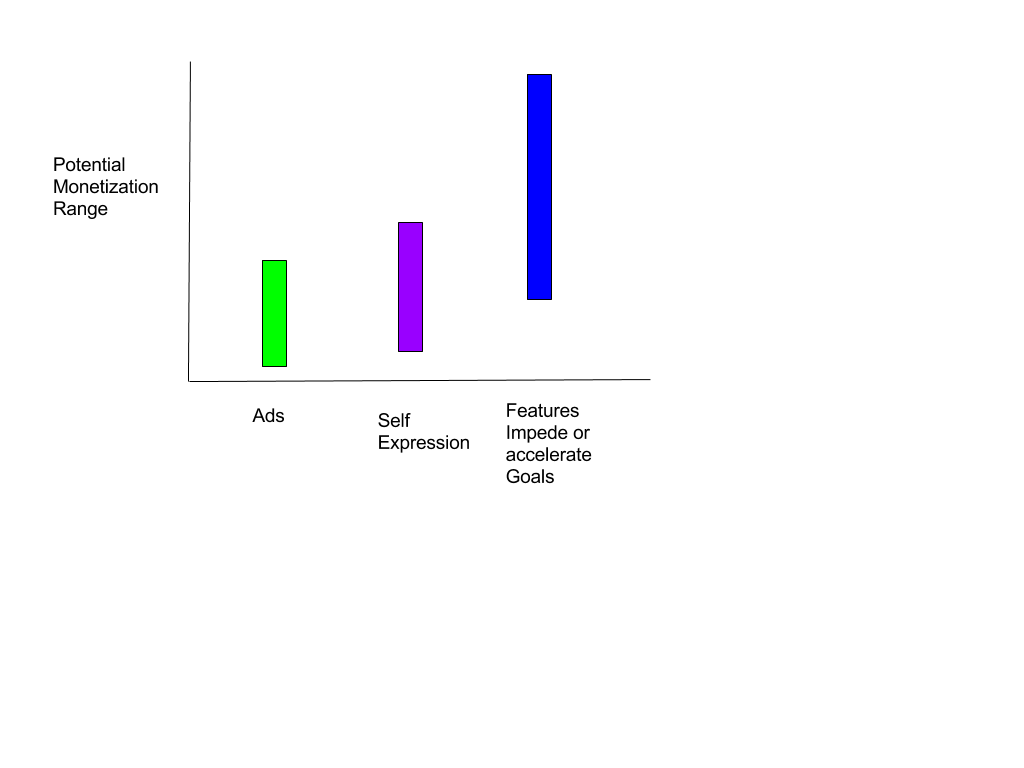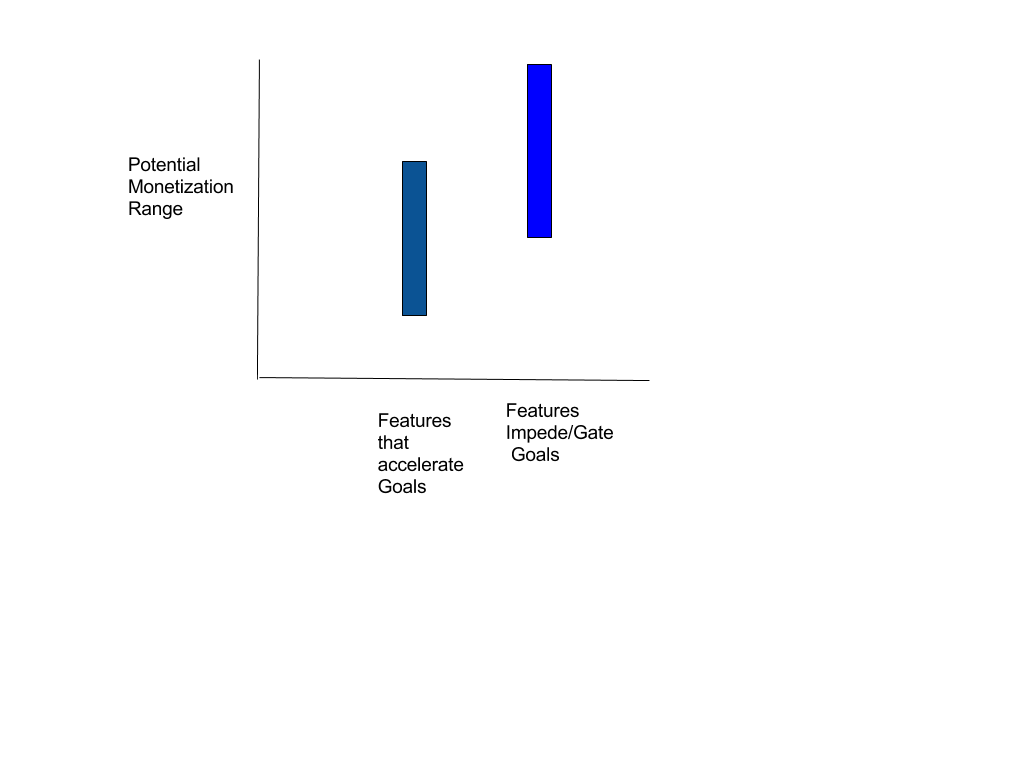Guidelines to monetize consumer apps: measuring monetization feature impact

Introduction
After working on a lot of games and apps over the years looking at how to monetize freemium apps, I put together this post that summarizes some of the guidelines we use for estimating potential impact of monetization features. This post also goes into reasoning behind the guidelines based on data from some of the past apps and games that I worked on and had access to. Although based on mobile games, I believe these guidelines can be applied to many mobile apps.
Three approaches of monetization
There are three approaches for monetizing freemium apps:
- Goals (accelerate or impede (a.k.a gate) the goals).
- Self-expression
- Ads
Comparison of the approaches
Features related to Goals >= Features related to self-expression ~= Ads.

Features related to goals have the most impact. Features related to self-expression is equal or slighter better than ads for general population.
Self-expression features can monetize better with women and younger people. Typically, if a game can earn $0.01 DARPU (daily average revenue per user) on ads, self-expression related features could attribute to $0.01 or $0.02 DAPRU. However, self-expression DAPRU is usually not too much more than revenue contribution from ads. The largest DARPU attribution still come from features related to goals. The upper limit of revenue from goals are usually related to the genre of the game. For casual games like match-3 games, goal driven revenue is lower than in hardcore games. Also, most of the goals in games are artificial goals, so it’s possible real goals may monetize better than artificial goals. Establishing artificial goals requires “buy-in” from the users, often it isn’t guaranteed and not easy.
Goals based features
Importance & relevancy of the goal
More important and more common the goal is, higher the monetization potential.

More common goals means the goal is shared by more people. For example in a dating app, some people don’t really need to filter for a specific type or personality if they are truly versatile. However, everyone will want to checkout more matches. A gate on checking out more matches will be much more important and relevant with a larger population than a few specific filters.
Hardness of gate vs. DARPU & retention

On the other hand, the harder the gate, higher the DARPU. However, it’s possible you alienate the users causing dropped retention. While it is a trade-off, surprisingly you can strike a balance allowing you to increase DARPU without losing retention or losing very little retention. If the gates are perceived as fun, challenging or invoking curiosity, they can actually increase retention in some cases. Hardness of gates should be tested by experiments.
Total Revenue equals DAU * DARPU, and DAU is a function of retention and installs. So revenue boils down to a quadratic function. Ultimately, there is a maxima for quadratic functions. Every situation is different, it may take a few tries to converge on the maxima. Use soft gates and make the levels flexible to adjust and experiments to find the maxima.
Self-expression features
-
More visible the expression, better the monetization Customization features are about attention. If more people get to see it, more people are willing to pay for it.
-
Appeals to women and younger kids more than men
Approaching saturation
If one approach is saturated, keep adding features in that area will not in additional revenue improvements.
On a particular past game, we were selling tools (powerups) for helping to beat a level. We sold one tool that generates a large portion of revenue. Then, we decided to add more tools to help beat a level. First, a couple can helps. However, adding more at some point didn’t help with revenue. Instead, it hurt, because users can be overwhelmed with choices.
Feature cannibalization
Too many features that focus on one goal will result in cannibalization.
Cannibalization means that two features may independently be equally as good for contribution revenue. However, if both features are implemented together, then the two features compete against each other. You may not necessarily have twice as much revenue.
The same cannibalization concerns applies if the only monetization is a premium subscription service. If we add enough value (or gated enough), there will be diminishing returns on additional value-add to premium service resulting in lower conversion to premium subscriptions. In that case, we may consider adding additional tiers or more direct in-app purchases. Self-expression related items may be best for in-app purchases.
Ending thoughts
- Ultimately, these guidelines can be just a “guesstimate.” Even with best feature idea/mechanism. how the feature is implemented, given context, surfaced, communicated, priced, etc will contribute to the success of a feature.
- It’s still a business decision to implement a particular feature considering all potential impact and costs, not just revenue related impact.





